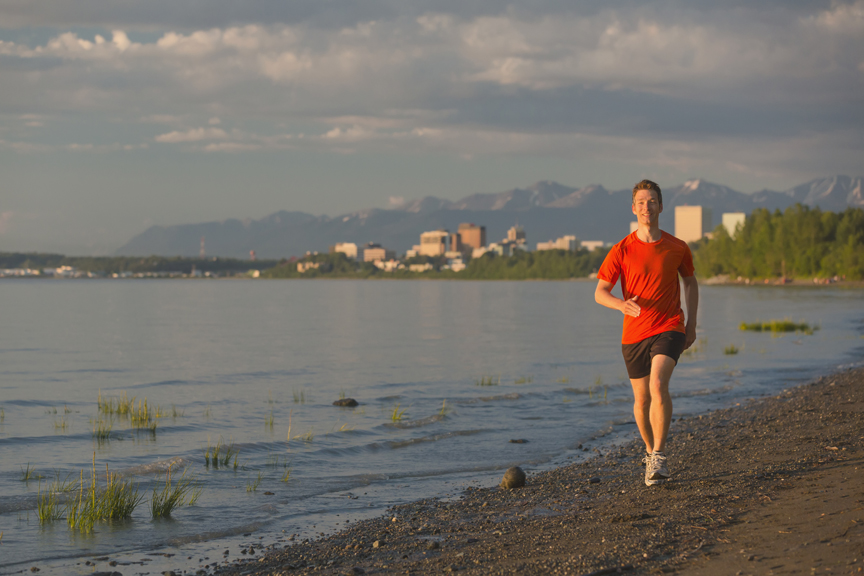Anchorage Alcohol Tax:
Theory of Positive ChangeIn April 2020, Anchorage voters passed a new sales tax on alcoholic beverages sold in the Municipality, with the revenue dedicated as new funding toward specific issues:
- Increasing community safety [“police, related criminal justice personnel, and first responders”];
- Reducing and preventing child abuse, sexual assault and domestic violence; and
- Prevention and treatment of substance misuse, mental health issues, and homelessness.
Not highlighted in the ballot measure or early discussions, but deeply relevant to the discussion, is the consideration of equity in our community: how structural racism and other systemic barriers impact some people in our community more than others. By eliminating race-based disparities in health and well-being, Anchorage will be a safer and healthier community for everyone.
Every fall, Recover Alaska, with our partners, advocates for appropriate usage of these dollars in the Municipal budget. We have also teamed up with the Alaska Black Caucus and the Alaska Children’s Trust to highlight the stories of how the funds in the second bullet above are being used. Please visit www.ReimagineAnchorage.org to learn more about how alcohol tax revenue is being used to reduce child abuse, sexual assault, and domestic violence.

Theory of Change Process
Visions, Goals, and Guiding Principles
Vision: Improved safety and wellbeing for all in AnchorageCommunity-wide Goals (What we want to achieve)
- Increased citizen and neighborhood-level engagement in selecting measures and other Municipal decision-making.
- Measurable improvement in key health, education, corrections, housing and other key measures of safety and wellbeing, and elimination of race-based disparities in same measures.
- Measurable improvements in social determinants of health and equity.
- Increase wealth generation and prosperity in neighborhoods with many households living in poverty.
- Children and adults are free of the burdens created by alcohol and substance misuse.
- Reduce rates of child maltreatment.
- Reduce rates of sexual assault and domestic violence.
- Reduce number of people and length of time experiencing homelessness.
- Decrease number of people with behavioral health conditions held in jails.
- Reduce suicide deaths of youth and adults.
Guiding Principles (How we will do the work)
- Engage with people and communities with lived experience.
- Address root causes and invest in long-term prevention.
- Intervene, treat, and connect people in immediate crisis, or chronic crisis such as homelessness and addiction, to short and long-term supports that increase safety and well-being.
- Leverage funds with other investors and funding sources to maximize impact.
- Directly address systemic racism and colonialism, reduce race-based disparities in each of the issues prioritized for alcohol tax funding, and promote racial equity.
- Make a broad impact on related issues; don’t address them separately or in isolation.
- Sustain investment over multiple years to fill funding gaps and support innovation.
- Support interventions that are data-driven, evidence-informed, and/or culturally relevant with clearly defined outcomes.
- Support interventions that are trauma-informed and healing-centered, and do not cause or perpetuate trauma.
- Commit to transparency: monitor progress using data, and regularly report out.
The “Why”

Funding Framework
We start with a simple principle: for every dollar we invest in addressing today’s crises, we commit a matching dollar in long-term prevention.
In other words: commit (approximately) equal shares of the new revenue to today (crisis response) and future generations (upstream prevention to improve wellbeing over the long term). This provides a balance between the two competing but equally important priorities and dedicates new funding to prevention activities.
We strongly recommend an equity lens be applied to all funding decisions: intentionally designed and implemented to dismantle systemic racism and elevate those who have been left out of decision-making, procurement processes and allocation of resources.
|
Funding Category |
Now |
Future |
$ (millions) |
Prop 13 Bucket(s) |
Notes |
|
DISMANTLE SYSTEMIC RACISM |
|||||
|
Dismantle systemic racism & support systems change |
✔ |
✔ |
$0.5 |
All |
Dedicated stream of funding for systems change: from community dialogues to staff training to technical assistance for process changes. |
|
COMMUNITY SAFETY |
|||||
|
Citizen Review Panel |
✔ |
✔ |
$0.25 |
1 |
Community led, independent oversight and investigative body for police-involved incidents + potentially policies. |
|
Restorative Justice initiatives |
|
✔ |
$0.5 |
1 |
Establish alternatives for resolving individual or community conflicts, and divert from court system. |
|
Continuum of services for behavioral health crises |
✔ |
|
$1.5 |
1 |
May include trained response staff or teams, facility, crisis hotline. Example: proposed Crisis Now model. |
|
HEALTHY FAMILIES + PREVENTION OF VIOLENCE |
|||||
|
Domestic violence, sexual assault (DVSA), child abuse and neglect crisis response |
✔ |
|
$2.0 |
2 |
Emergency housing, counseling and resources for survivors. Also related to preventing homelessness for youth, adults and families experiencing violence. |
|
Promote healthy babies & families in first years of life |
|
✔ |
$2.0 |
2 |
Abundant evidence for promoting early childhood health. Includes home-based, pre-K. |
|
ACCESS TO SAFE HOUSING + RECOVERY |
|||||
|
Shelter operations funding |
✔ |
|
$2.0 |
3 |
Emergency shelter and services for life and safety of people experiencing homelessness. |
|
Treatment operations funding |
✔ |
|
$1.0 |
3 |
Mental health and substance misuse treatment programs. |
|
Housing innovation fund |
|
✔ |
$1.0 |
3 |
Pilot or launch funding for new, small-scale projects to test concepts or establish well-proven models locally. |
|
Treatment & recovery innovation fund |
|
✔ |
$1.0 |
3 |
Pilot or launch funding for treatment programs to establish; potential for sustainability via Medicaid |
|
PLANNING + COMMUNICATIONS |
|||||
|
Long-term planning, evaluation, communications |
✔ |
✔ |
$0.25 |
All |
Monitoring outcomes, exploring potential new funding priorities, communicate data. |
|
TOTAL |
|
|
$12 m |
|
|
Building in Equity
What to fund and how to fund are equally importantThe categories in the funding framework are intentionally broad, with many possible combinations of programs or priorities. Throughout the process, we heard two key themes:
- Racial equity and systems change are not an activity, but a paradigm shift. The equity lens must be applied to every funding decision, including how projects or organizations are selected. Many organizations attested to the fact that how we allocate funds today, through competitive RFP processes or sole-source procurements gives advantage to those who have the most experience, expertise and prior success in securing funding—not necessarily the most impactful, promising or community-based ideas.
- “Nothing about us, without us.” This phrase originated in the disability rights movement, and should be a universal principle. Individuals with lived experience of homelessness, racism and discrimination, substance misuse, adverse childhood experiences, and interpersonal violence were welcomed to this process as subject matter experts, and this product is infinitely better as a result. While these perspectives need to be prioritized in all areas of government, this is especially true in decisions about how public money is spent.
In addition to our recommendations for what to fund, we strongly urge the Assembly to fundamentally change how we decide, which will impact whose priorities are represented and who receives those funds.
Specific Recommendations
- The Assembly should identify general intent and desired outcomes for the proposed funding streams, including any allocated directly to the Municipality or Anchorage School District.
- Delegate the decision making to subject matter experts, to the extent possible, consistent with state and local law. This includes individuals with lived experience, and organizations, communities and individuals with demonstrated expertise in understanding what works. Immediately after the 2021 funding decisions have been made, form an oversight body to monitor implementation, from reviewing data and reporting, to evaluating potential future uses of the funds, to providing an oversight role to keep recipients of the funds accountable for results.
- Consider alternative stewards for allocating funds, whose grantmaking processes are centered around equity and community impact. If provided clear guidelines, intended outcomes and demonstrated understanding of their responsibility for allocating public funds, non-government funders could provide more flexible, community-centered and culturally appropriate ways to prioritize projects. This can include criteria such as:
- What neighborhood, population, community or mission does the organization serve?
- What percent of the applicant’s board is composed of Black, Indigenous and other People of Color? (or, people with lived experience; people in recovery; people experiencing homelessness; others as appropriate to the funding category)
- Does the project operationalize equity?
Who We Are
Our list of participants is over 200 people from over 60 organizations, including nonprofit, government agencies, tribal organizations, private businesses, and individuals, including those with lived experience.
This work was led by:
Tiffany Hall, Molly Mattingly and Chris Snyder, Recover Alaska
Celeste Hodge Growden, Alaska Black Caucus
Trevor Storrs and Sarra Khlifi, Alaska Children’s Trust
Dick Mandsager, Senior Housing Fellow, Rasmuson Foundation
Thea Agnew Bemben and Anna Brawley, Agnew::Beck Consulting
Our Supporters Include:
Alaska Black Caucus
Alaska Children’s Trust
Cook Inlet Tribal Council
Houseless Resource Advocacy Council
Native Movement
Poor People’s Campaign
Recover Alaska
Shiloh Community Housing
StoryWorks Alaska
The Alaska Center
The Alaska Center Education Fund
YWCA Alaska
Community Member, Diane DiSanto
Community Member, Heidi McCroskey Heimerl
Community Member, Laura Norton-Cruz
Community Member, Michael P. Carson
Resources
Full Project List
Advocacy Toolkit
Data on Alcohol Taxes
- Recover Alaska Dashboard: Alcohol Consumption and Consequences Data
- McDowell Group: The Economic Costs of Alcohol Abuse in Alaska, 2016 Update. Prepared for the Alaska Mental Health Trust Authority, March 2017.
- Alaska Department of Health. Health Impacts of Alcohol Misuse in Alaska. State of Alaska Epidemiology Bulletin, Volume 20, No. 2., May 2018″.
- Wagenaar, Alexander; Mildred Maldonado-Molina; Bradley Wagenaar. Effects of Alcohol Tax Increases on Alcohol-Related Disease Mortality in Alaska: Time-Series Analyses From 1976 to 2004. American Journal of Public Health, vol. 102(4):584, April 2012. Key finding: When Alaska’s state alcohol tax was increased in 1983 and 2002, a study of 40 years’ worth of health outcomes data found significant and lasting reductions in the numbers and rates of deaths in Alaska caused by alcohol-related disease.


